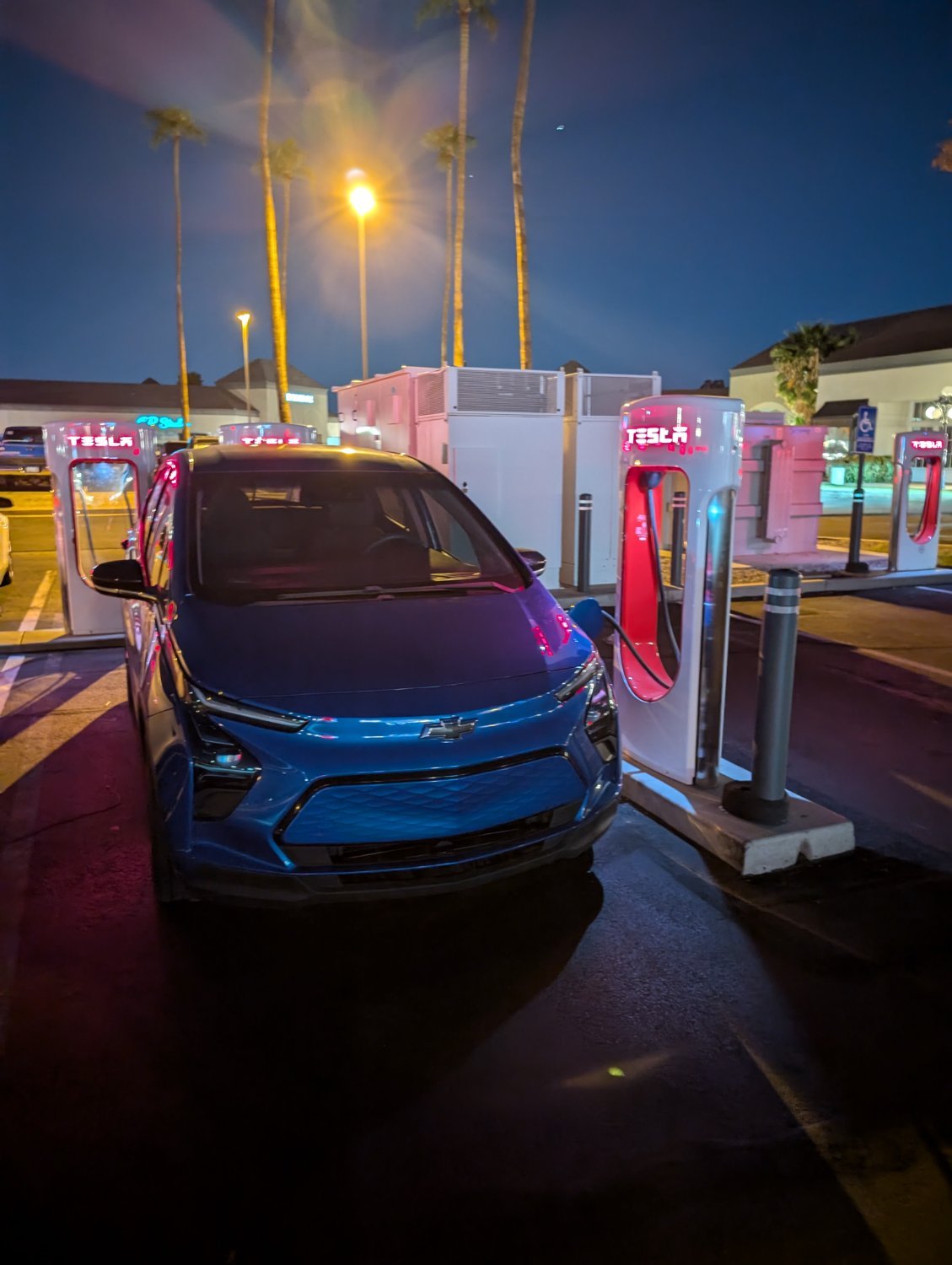The only thing wrong with this picture is a Bolt at a DCFC. They charge so ungodly slow they might as well be ICEing the stall they’re at.
[Dormant] Electric Vehicles
We have moved to:
A community for the sharing of links, news, and discussion related to Electric Vehicles.
Rules
- No bigotry - including racism, sexism, ableism, casteism, speciesism, homophobia, transphobia, or xenophobia.
- Be respectful, especially when disagreeing. Everyone should feel welcome here.
- No self-promotion.
- No irrelevant content. All posts must be relevant and related to plug-in electric vehicles — BEVs or PHEVs.
- No trolling.
- Policy, not politics. Submissions and comments about effective policymaking are allowed and encouraged in the community, however conversations and submissions about parties, politicians, and those devolving into general tribalism will be removed.
The charge rate's pretty slow, sure, but the battery isn't very big, so it evens out.
A 10% to 80% charge is about an hour.
It really doesn’t. I’ve seen bolts that have been at chargers for over 2 hours and still aren’t at 100%
I ordered the converter for my lyric yesterday. can't wait to get it. I was stranded once before because there weren't enough chargers around but there were Tesla ones I just couldn't use.
I am fairly certain you could charge any EVs with the Tesla supercharger in most parts of the world. Perhaps it's just a US thing where it's limited to just Tesla vehicles.
The U.S. decided to let the market decide, which created an annoying mess. Early electric cars, mostly Japanese like the Nissan Leaf, used CHAdeMO. The Society of Automotive Engineers created the J1772 plug for AC charging and the CCS1 plug takes that plug and adds 2 additional connections underneath for DC fast charging. Tesla created their own unique plug that lets DC or AC run over the same pins, making the plug more compact. It uses the same communication protocol as CCS, though, so with an adapter Tesla cars could also use CCS1 chargers. CHAdeMO can’t work with any other system because the protocol is very different (I did see a story about a very expensive adapter that could make it work, but was not certified by any authority).
This Tesla plug is not used in Europe because authorities mandate all electric cars use the CCS2 plug, so they have no choice and this allows other cars to use their chargers. In the US and Canada Tesla built out by far the most extensive network of chargers for their vehicles using their proprietary plug. They also tend to have many more spaces available and the machines are much more reliable. It became a selling point for Tesla cars to have access to this network as well as CCS1 charging stations, giving Tesla drivers the most options. Elon Musk famously offered his plug “free of charge” to any manufacturer, but this was mainly a publicity move. The terms came with the poison pill that any manufacturer would have to join in Tesla’s patent pool and agree not to sue each other for patent violations. While Tesla had a lot of patents related to electric drivetrains and optical driver assistance, they had very little for anything else related to making a car, including radar driver assistance that ultimately seems superior to Tesla’s optical systems. Most other car makers would’ve lost more than they gained, so only small manufacturers joined.
Everything changed with the Infrastructure Investment and Jobs Act, aka the Bipartisan Infrastructure Law. It included billions of dollars for building electric vehicle chargers, but there were stipulations that the chargers had to use standard plugs open to multiple vehicles and accept credit cards. Suddenly Tesla decided to open their plug up and renamed it the North American Charging Standard (NACS). This made the Society of Automobile Engineers grumble because they already had a standard and this hadn’t been submitted as a standard, but they have gone ahead and standardized it as SAE J3400. Ford was the first manufacturer to announce they would switch to NACS for the 2025 model year, and negotiated a deal to let their older vehicles with CCS1 connections use Tesla chargers with an adapter and a software update to the cars. Within a year all the other carmakers selling in the US and Canada made the same deal.
In the end the market did decide, and maybe the plug is better. But it also took a long time to reach that consensus and a lot of cars were sold that now have outdated plugs. The CHAdeMO cars are especially at a disadvantage; there already weren’t many chargers for them, there won’t be many more built, and many that exist will probably go away in the next decade. It’s quite likely that in the future some otherwise usable cars will become unusable simply because they won’t have a plug available.
Great write up, thank you for that
It's definitely been a thing in the US for a long time, not sure about the rest of the world. Ford and Rivian were the first to gain access, then GM a couple days ago. Hyundai, Nissan, Lucid, etc still can't charge at superchargers in the US right now.
I thought the only other brands that could charge at Superchargers were Ford and Rivian? Ford explicitly mention this as a feature in their marketing. Did Tesla roll it out to more brands?
Ford was the first to sign on but eventually everyone did. Just about all 2025 electric cars sold in the US will use the Tesla plug.
It just rolled out to GM a couple days ago.
